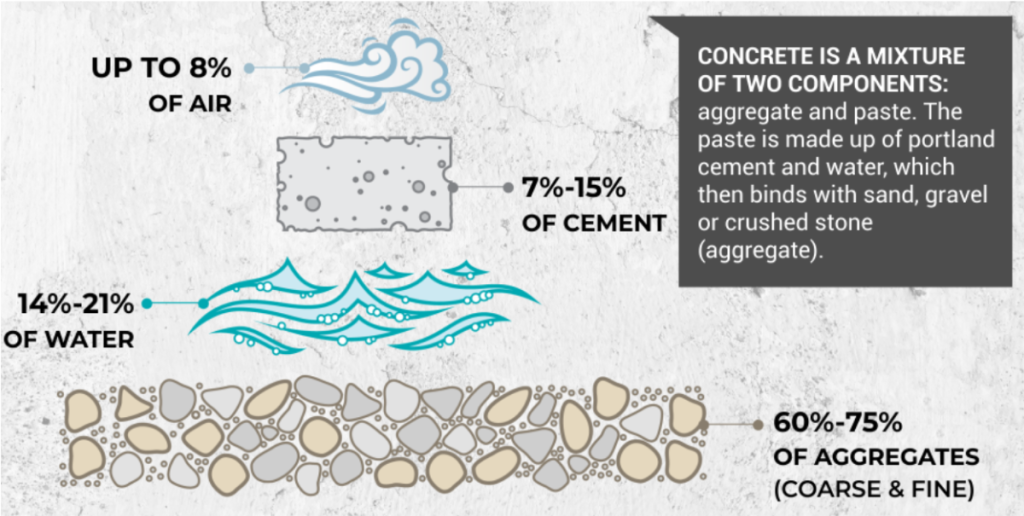Finding Concrete Solutions to Carbon Emissions

A new carbon-busting power couple was formed when two startups joined forces to trap carbon dioxide via direct air capture and sequester it into concrete, showing the potential for new tech collaborations that reduce emissions.
What happened: Heirloom Carbon Technologies recently tested a process that uses limestone to absorb carbon dioxide from the air which was then injected into concrete by CarbonCure Technologies, where it will stay 4eva.
Why it’s important: Concrete is the word’s second most consumed product (after water) and contributes 7 to 8 percent of the world’s carbon emissions. It’s used to build basically everything and comprised of air, cement, water, and aggregates – sand, gravel, and crushed stone.
Components of concrete

The environmental impacts from concrete: The most energy-intensive part of its production is in making the cement, which can be broken down into two steps:
- Clinker production (50 percent of emissions)
- Thermal energy for the kiln (40 percent of emissions)
Clinker production: Clinker: not the name of a 90s video game character, but a raw material used for cement and is formed from a process called calcination. Ground limestone and clay are heated up to 1450°C in a huge kiln, which produces lime – aka clinker – and carbon dioxide. The clinker is then combined with gypsum which creates cement.
Thermal energy for the kiln: There are also emissions from generating heat for the calcination to occur. Most cement factories burn fossil fuels such as coal, oil, or natural gas, to produce the heat required for this process.
How cement is made

The are also small amounts of emissions created when the aggregate rocks are crushed, screened, and separated, but without any heating. Not to mention the whole process is water intensive, with concrete using 1.7 percent of the world’s total water withdrawal.
Of course, China is at the centre
The main culprit of rising emissions from cement are middle-income countries building infrastructure to support their development. Of China’s total emissions, 13 percent come from cement production, while half of the world’s cement emissions come from China.
- In high-income countries such as Canada and the US, where much of the infrastructure is already built up, cement production only account for about 1.5 percent of total emissions
What’s being done: Technologies like CarbonCure’s along with others from large companies and startups are tackling the emissions from concrete production. Most initiatives are focused on alternatives to clinker (including the use of bacteria!), increasing the energy efficiency of the process, using alternative fuels/electrification for heating, and carbon capture during the process.
Big picture: Heirloom and CarbonCure’s test was small. It captured just 33 kilograms of carbon dioxide, a drop in the kiln bucket of the industry’s 4 gigatons of annual emissions. But these are the first steps in larger change needed for the industry to reach net zero and reduce its environmental impact.
+Bonus infographic: The Environmental Impact of the Cement Industry




